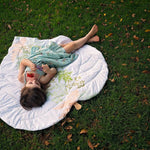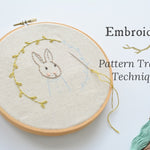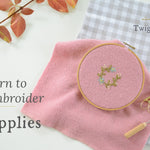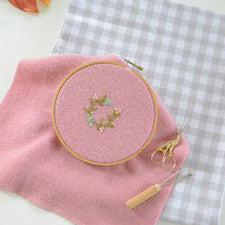How to avoid cultural appropriation going into Halloween
As sewists, many of us get excited about making costumes and Halloween season brings many opportunities to let one's creative juices flow.
In the midst of the excitement of costume sewing, some of us may not realise the costumes we are lovingly creating have the potential to cause hurt, and may impede someone else's celebration.
In an effort to bring attention to this, we asked Amanda Kaiser from Indigenous Voices | Cultural Cultivation to tell us more, on how we can avoid cultural appropriation (CA) but still allow our children and ourselves to celebrate this holiday so it’s enjoyed and no one gets hurt.

Cultural appropriation is often a hot topic around Halloween, because of what large companies, such as Disney, have provided in terms of entertainment.
There are a few simple questions you can ask in order to find our whether or not a costume touches cultural appropriation.
- Does this costume or any of the details in it perpetuate stereotypes? Oftentimes CA mocks or belittles another culture and creates a joke at the expense of it. Cultures are not monoliths so ask yourself… is this what “insert people” look like or is that just a stereotype I’m pushing?
- Are any of the items part of this costume considered sacred or traditional? A war bonnet, feathers in the hair in an Indigenous way, or even sugar sculls are sacred to their cultures. Another example is Hamsa Hands, Bindi’s, Hijab’s, or Maui’s tattoos from Moana. If you don’t know, do your own research. There are many people who will answer questions so long as you’re coming from a point of view where you don’t want to be offensive.
- Have you altered the person in the costume’s skin colour? Do not do this. Any darkening of skin is offensive. Full stop.
- Is the costume culturally significant? Yes? Skip it.
- Does this costume help diminish oppression or marginalisation of a people? Yes? Skip it.
Writing as an Indigenous woman who sees multiple children dressed up as Pocahontas each year, I must point out that cultural appropriation is mentally and emotionally destructive towards minorities. Disney is not an excuse to dress up as another culture.
Matoaka (Pocahontas) was a real person and one of our first MMIWGT2S+ people. Every year I get to be told by people not of my culture that she’s just a Disney princess and the information that I give out is brushed off.
Costumes should not be taken as an opportunity to take a person’s heritage or culture and wear it for a day. Speak to your kids and explain why it’s wrong and shouldn’t be done. Speak to your friends about it as well. Every time you help correct someone, it helps take the exhaustive load off of the person who it’s affecting.
Trust me when I say we are mentally tired from having to explain this over and over again to people who brush us off and make excuses.
So now you must be asking… what AM I allowed to dress myself or my child up as? One answer is - anything that you wouldn’t feel embarrassed wearing yourself in front of a room full of those people that costume represents.
Here are some links for further reading and research:
Amanda Kaiser
Founder - Indigenous Voices, Cultural Cultivation
She/Her



